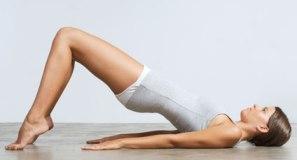All Departments
- Endoscopy
- kyphoplasty
- Minimal Disc Protrusion
- Posture
- Radio Frequency Ablation
- Spinal Cord Stimulator
- Spinal Drug Delivery Systems

Emergency Cases
+91 98252 63969Endoscopy
WHY DO WE HAVE A BAD ENDOSCOPY?

Our culture and society tells us many conflicting things about posture andexercise, some of which is very useful and some of which is misguided and harmful. Coupled with this, it is also not very easy to maintain perfect posture in modern living, which such emphasis on sitting down, especially in awkward environments.
We are often ignorant of what we should exactly be doing, and if we do know, we do not value doing the correct thing enough or are too impatient to do things correctly. We also may not have the bodily awareness to tell exactly what our posture is like at any given moment in time, save for those at the pinnacle of martial arts for example. One does not tend to notice that which is habitual.
It is funny that we live in a society that is so sick that people can’t even be bothered or are too weak to physically support their own upper bodies, but slouch and sprawl themselves onto chairs and sofas for a large number of hours in a day, contorting our bodies and using the lower back as a chair to slouch onto and prop your upper body up against.
WHAT IS CORRECT ENDOSCOPY? WHY IS IT IMPORTANT?

The spine is meant to be straight at all times, with a nice arch/curve in the lower part of the back. The neck is designed to be straight and in line with the spine. That’s the bottom line. Of course, the spine and back are meant to be very flexible, and can move in all manner of different directions, but the idea is that if you do, it is only for short periods and without much force involved.
If you are sitting and curve your spine (ie slouch) then you are putting 2-4 times more pressure on your one side of your vertebrae of your spine and neck. In short, whenever you are sitting down or standing up or exercising, you should have a straight back at all times. Because of the increased loads that you put on your skeleton and muscles during exercise or stretching, it is even more important than when resting to have a straight back.
Most tension goes to the lower back, and this can result in problems with the legs, for example the knees, the achilles tendons, the hamstrings etc. If we experience problems in the lower body, we go to a physiotherapist to treat these injuries when the root of the problem is our back! Approximately 30 – 50% of adults have lower back problems. Unfortunately most of us don’t make the connection. It is not rocket science.
Above is an example of a person standing correctly on the left and a person dropping their hips forwards on the right (with the resulting over-curvature in the spine)
Excessive dropping of the hips can be a result of ‘overcompensating’ to maintain an arch/curve in the back as a result of trying to correct a slouch. This is illustrated in the picture above. The first person is slouching. The second person is sitting with a correct posture. The third person is engaging in such ‘forced posture’ or overcorrection.
BACK EXCERCISE

For the first lower back exercise, lie on your back on an exercise mat. Bring your feet close to your bottom, with your heels about 6 inches from your bottom. Keep the feet close together. The idea is to use your feet and shoulders as the point of contact with the floor and to lift your pelvis into the air, until the thigh and spine are in line, and then lower. To achieve this anchoring position you must be on an exercise mat or other mat and gripping it with both hands (straight arms). Do as many repetitions as possible or until you feel any discomfort. Ideally you should do as many of these repetitions as you do for the stomach exercise. When you are highly proficient at this, you could try to increase the resistance slightly by wearing a light weight belt. Or just stick to your own body weight and keep increasing the number of repetitions and sets.
BACK EXCERCISE

The second back exercise is more advanced and is not recommended for beginners or for those with a weak back.
For this second lower back exercise, lie on your stomach on the floor, keep your neck in line with your spine (ie look down) and bring your arms in front of your so your palms are facing down and in front of your face. Keep your legs straight. Simultaneously lift your legs and your chest off the floor keeping the lower abdomen and pelvis on the floor. And then lower. Repeat (repetitions) as many times as possible or until you feel any discomfort.

